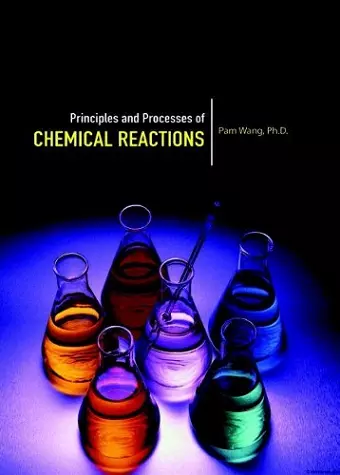Principles and Processes of Chemical Reactions
Format:Hardback
Publisher:Delve Publishing
Published:30th Nov '16
Should be back in stock very soon

Chemical reactions are processes that transform chemical substances to create new substances with different identities. Traditionally, these processes involve solely the movement of electrons in forming and breaking bonds between atoms; processes that change the composition of nuclei are nuclear reactions. Equations are often used to represent the path from starting materials to end products, and provide details such as reaction conditions, stoichiometry, and intermediates. In a chemical equation, the number of atoms for each species must be equal on either side of the arrow, which indicates the direction in which the reaction proceeds. Reversible reactions are denoted by double arrows, which means the forward and reverse reactions will compete with each other until the system reaches equilibrium. The simplest form of a chemical reaction—in which reactants are converted into products in a single step with a single transition state—are known as elementary reactions. Although more commonly, reactions take place in a single phase, in certain cases, they occur at the interface between two different states (e.g. solid/gas interface).
Depending on the specific conditions, a chemical reaction can proceed under thermodynamic or kinetic control. A thermodynamically favored reaction is one where the products are more stable than the reactants (i.e. energy state of products is lower than that of reactants), resulting in the release of energy or heat (exothermic). On the other hand, a reaction is kinetically favored when the activation energy is low (i.e. low energy transition state), leading to faster reaction rates. Catalysts can lower the intrinsic activation energy of a reaction and thus speed it up. Generally speaking, thermodynamic and kinetic variables both need to be taken into account in determining whether or not a chemical reaction is favorable. There are four basic reaction types: synthesis, decomposition, single replacement, and double replacement. Synthesis refers to bond-forming reactions in which two or more simple substances combine into a more complex substance. Decomposition is the reverse of a synthesis reaction, involving the breakage of bonds in a complex substance to form simpler ones. Single replacement reactions involve the exchange of a single, uncombined element for another within a compound, while double replacement reactions involve a switch between two elements that are both within compounds. Reactions that lead to a change in oxidation states...
ISBN: 9781680959024
Dimensions: unknown
Weight: unknown
436 pages